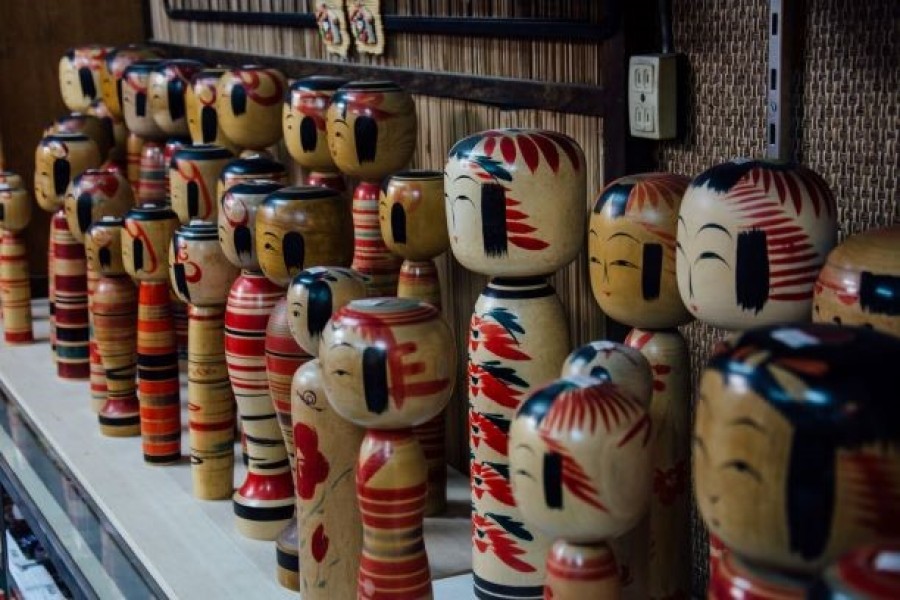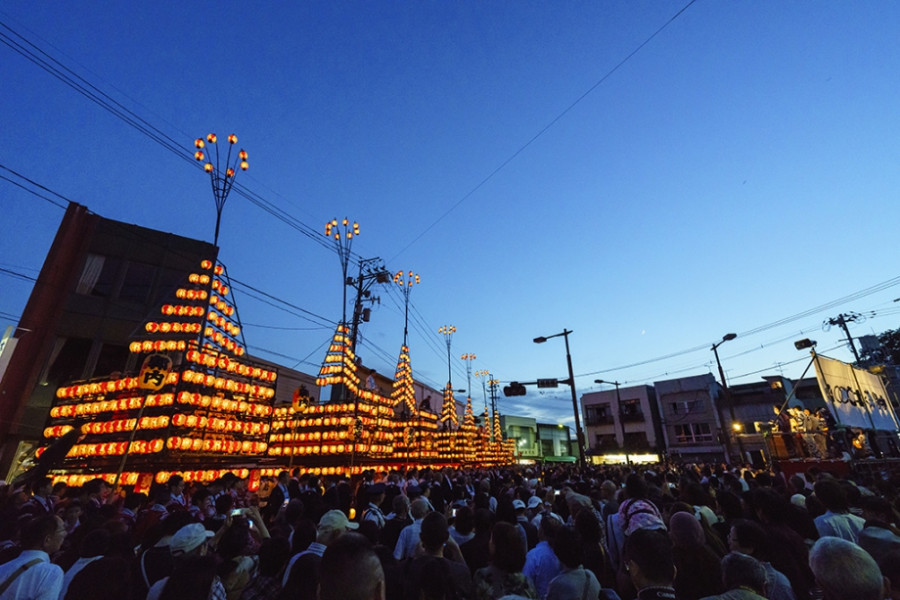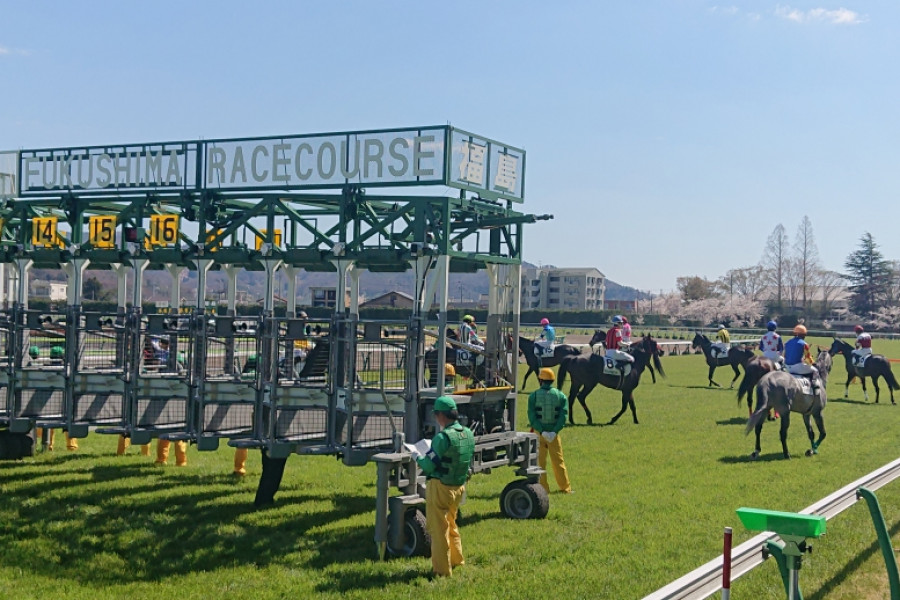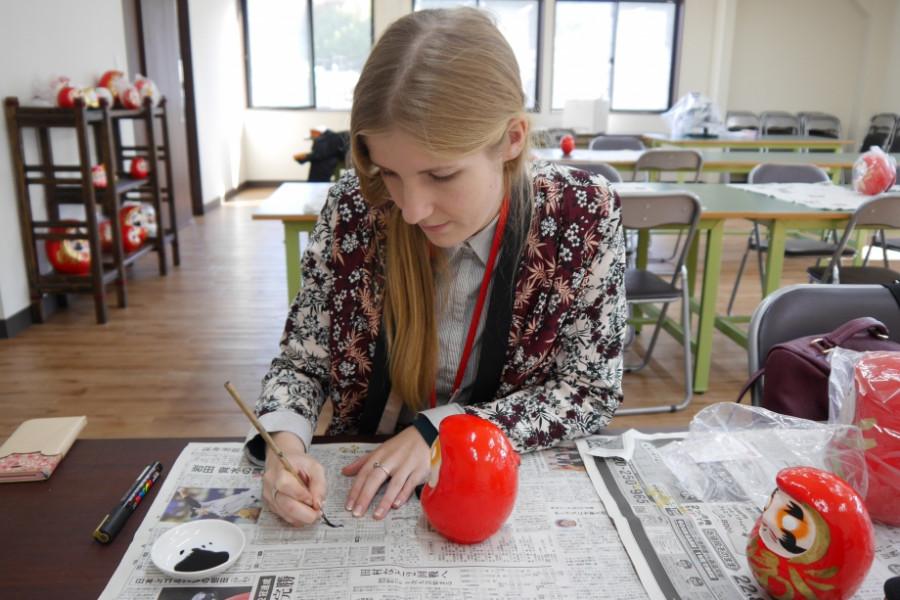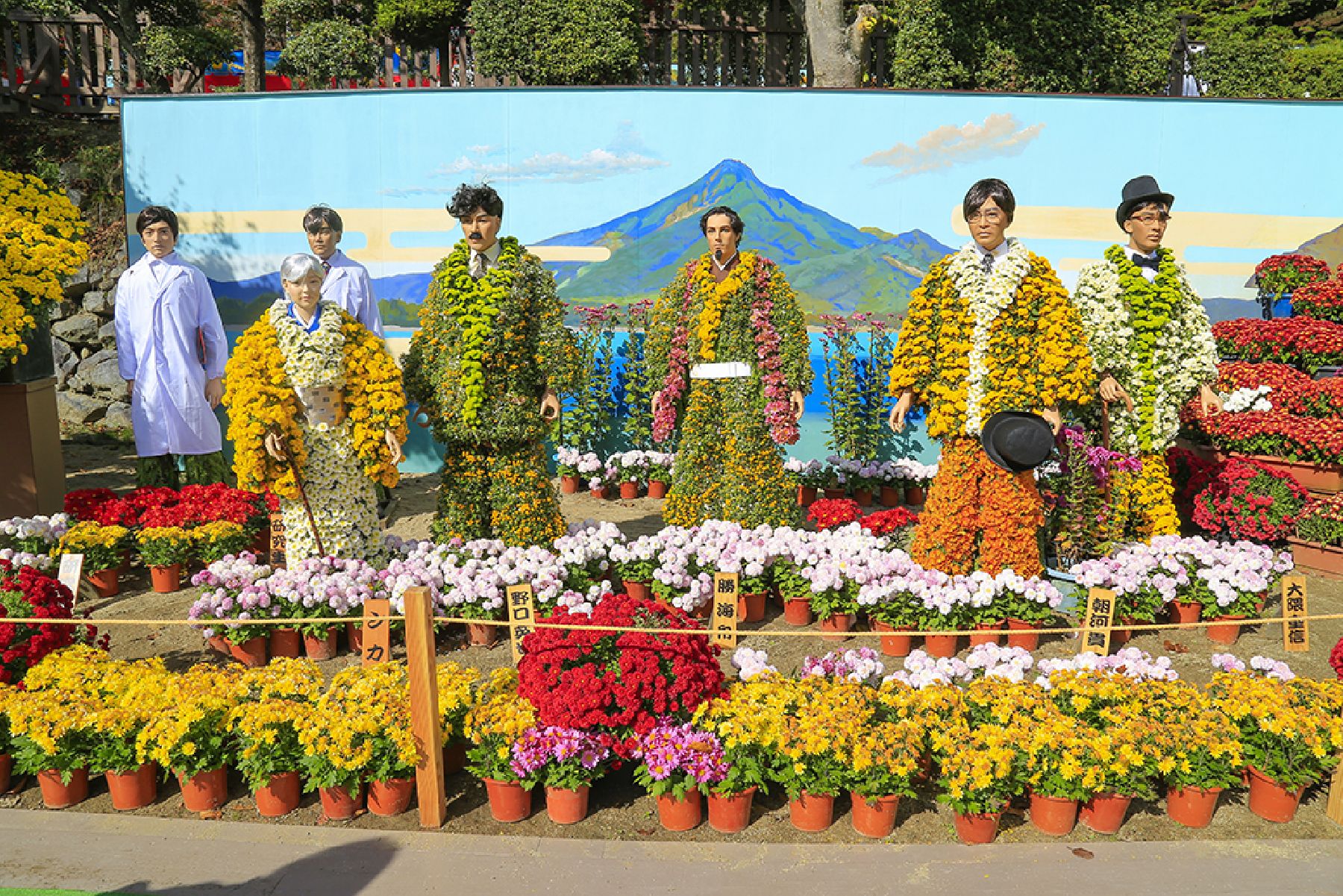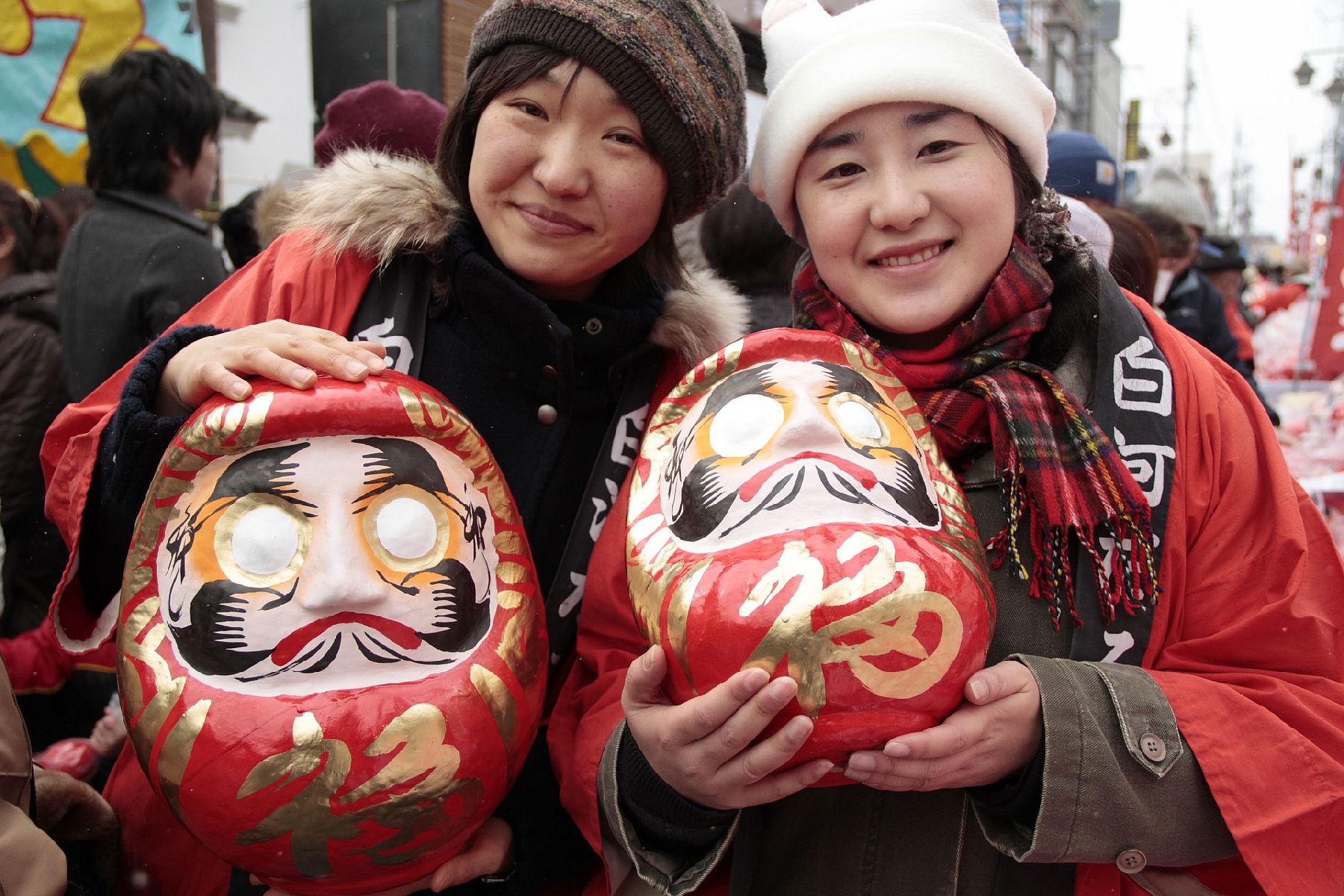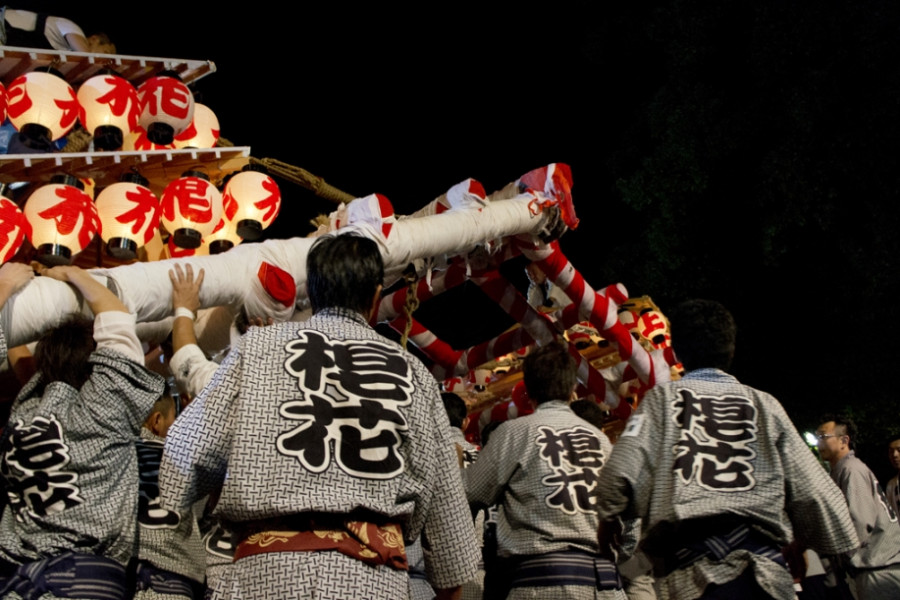Events
Nihonmatsu Chrysanthemum Doll Festival (Nihonmatsu Kiku Ningyo)
Each year from mid-October to mid-November, an impressive collection of dolls adorned with chrysanthemum flowers (known as ‘kiku ningyo’) are on display at the Kasumigajo Castle Grounds in Nihonmatsu City, for one of Japan’s salient Chrysanthemum festivals. The city prides itself in its cultivation and cherishing of chrysanthemums, the National Flower of Japan. Several places in the city are adorned with chrysanthemums during the festival period.Kasumigajo Castle, also known as Nihonmatsu Castle, was destroyed during the Boshin War in the 19th century. Visitors can climb up the castle ruins, of which only the walls remain, and enjoy a view of Nihonmatsu City from above. The castle was made into a prefectural natural park and is beautifully preserved, with many cherry blossom trees and flowers in bloom in the spring, as well as stunning foliage in the fall.
